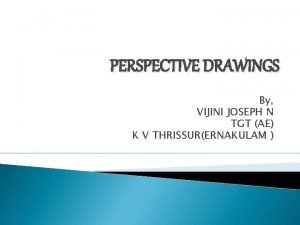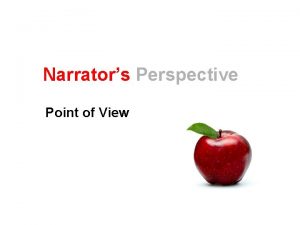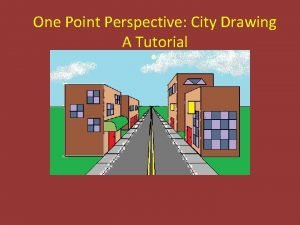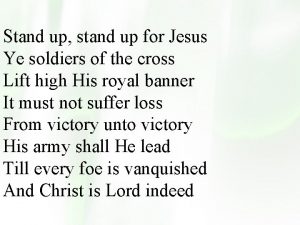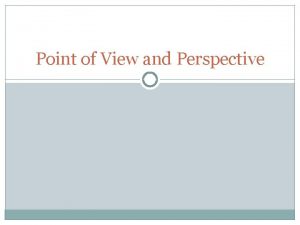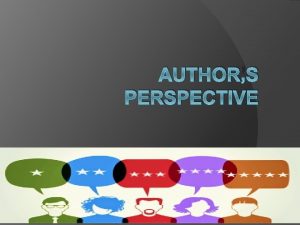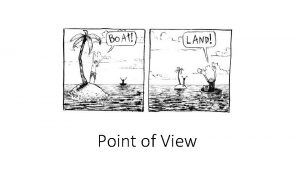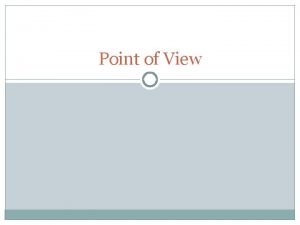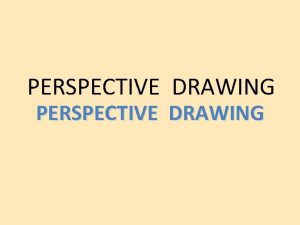Point of View Position stand point perspective Points








- Slides: 8

Point of View Position, stand point, perspective

Points of View �First Person Point of View �Second Person Point of View �Third Person Omniscient �Third Person Limited

First Person �A story told from the first person point of view involves the narrator as part of the story, and usually features the following pronouns: I, me, mine, our, we, us, etc. � Example: I was minding my own business when Mom burst in. “What’s with you? ” I grumbled.

Second Person � Very rare in literature, this point of view treats the reader as the main character in the story. Other characters refer to the reader as "you. " Descriptions are based on what you would see if you were in that situation. This narrative voice is generally reserved for explanatory articles and how-to books, but adventurous writers will occasionally pen a short story or novel in the second person. � Example: It started that simply. At the courthouse or the library there was a large bulletin board, and for a dollar you could sign the board and write down your guess to win the car-through-the-ice raffle. Of course, you never met anyone who had won, but only those who knew somebody who had won, and therein, in the winning, the simplicity was lost. (Excerpted from Father Water, Mother Woods by Gary Paulsen) SECOND PERSON

Third Person � Third person point of view is told by a narrator who is not part of the story and generally uses pronouns such as: he, she, it, they, them, him, her, its, etc. There are three types of third person narration: third person, omniscient and limited. � Example: He gripped the dollar bill tightly. “You can’t have it, ” he told her. (Third Person)

Third Person (Omniscient) � “Omniscient” means all-knowing. If a person is all-knowing, he or she knows the thoughts and feelings of everybody. Third person omniscient occurs when a story is told by a narrator who is not part of the story but knows the thoughts and feelings of all the characters in the story. In other words, a third person omniscient narrator is inside the hearts and heads of the characters, exposing their thoughts and/or feelings.

Third Person Omniscient continued… � Example: One of the soldiers, the taller one, moved toward her. Annemarie recognized him as the one she and Ellen always called, in whispers, “the Giraffe” because of his height and the long neck that extended from his stiff collar. He and his partner were always on this corner. He prodded the corner of her backpack with the stock of his rifle. Annemarie trembled. “What is in here? ” he asked loudly. “Schoolbooks, ” she answered truthfully. (From Number the Stars by Lois Lowry) Third Person Omniscient

Third Person Limited � Third person limited is similar to the omniscient point of view, but it is a limited viewpoint. The narrator only knows the thoughts and feelings of one character. https: //flashcards. engrade. com/povfc


